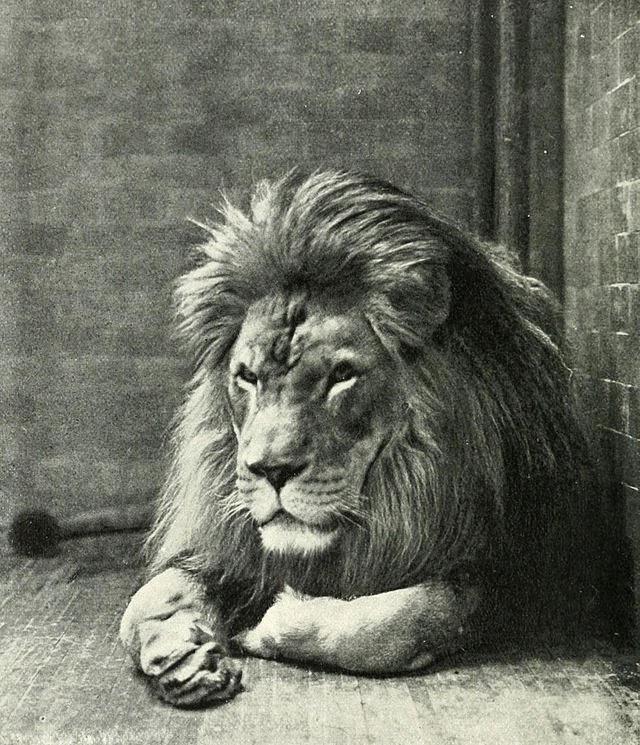THE DEAD LION
Ecclesiastes 9:4
Anyone who is among the living has hope --even a live dog is better off than a dead lion!
The American Lion
As with the American Cheetah, the big-cat affiliations of the American Lion (Panthera leo atrox) are in some doubt: this Pleistocene predator may actually have been more closely related to tigers and jaguars. The amazing thing about the American Lion is that it coexisted, and competed, with both Smilodon (aka the Saber-Toothed Tiger; see the #10 entry below) and Canis dirus, the Dire Wolf. If it was in fact a subspecies of lion, the American Lion was by far the biggest example of its breed, some males weighing as much as half a ton. More about the American Lion
The Cape Lion
The Cape Lion, Panthera leo melanochaitus, holds a tenuous position in the big-cat classification books; some experts maintain it shouldn't count as a Panthera leosubspecies at all, and was in fact a mere geographical offshoot of the still-extant Transvaal Lion of South Africa. Whatever the case, the last individuals of this big-maned breed expired in the late 19th century, and a convincing sighting hasn't been recorded since (though not for lack of trying). More about the Cape Lion
The Cave Lion
Probably the most famous of all extinct big cats--if only for its close association with the Cave Bear, on which it regularly lunched--the Cave Lion (Panthera leo spelaea) was the apex predator of Pleistocene Eurasia. Oddly enough, this lion probably didn't live in dark grottoes; it earned its name because various specimens were unearthed in European caves, which Panthera leo spelaea raided in search of bear-sized snacks (an angry, full-grown Cave Bear would have been an even match for an 800-pound Cave Lion male, a scenario that's depicted in this article). More about the Cave Lion
The European Lion
Confusingly, what paleontologists refer to as the European Lion comprised as many as three, rather than just one, subspecies of Panthera leo: Panthera leo europaea, Panthera leo tartaricaand Panthera leo fossilis. What all these big cats shared in common were their relatively large sizes (some males approached 400 pounds) and their susceptibility to encroachment and capture by early European "civilization": for example, European Lions featured in the gruesome arena combats of ancient Rome. More about the European Lion
The Barbary Lion
The Barbary lion, sometimes referred to as the Atlas lion, is an African lion population that is considered extinct in the wild and is among the biggest lion subspecies. It is believed that the last Barbary lion was shot in the western Maghreb during the year 1942 near Tizi n'Tichka.
The Barbary lion was first described by the Austrian zoologist Johann Nepomuk Meyer under the trinomen Felis leo barbaricus on the basis of a type specimen from Barbary.
A lion from Constantine, Algeria is considered the type specimen of the specific name Felis leo used by Linnaeus in 1758.
The Barbary lion is believed to be extinct in captivity as well. Possible Barbary lion individuals or descendants have allegedly been located in zoos and circus populations within the last three decades, but this has not been confirmed genetically.



Comments
Post a Comment